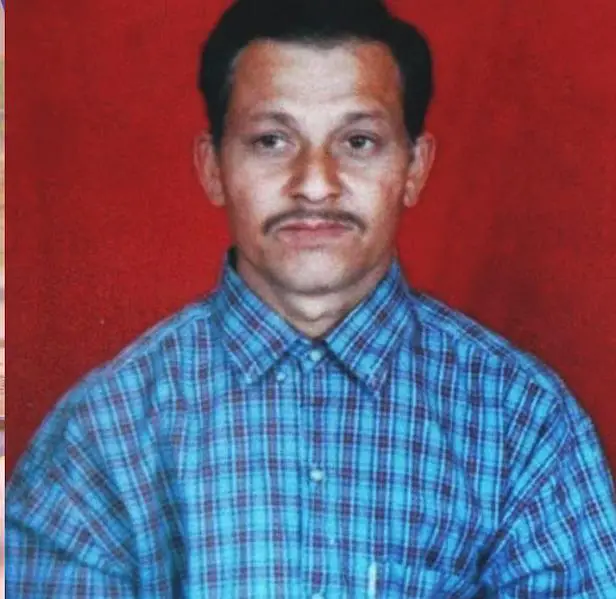- Introduction
On May 16, 2008, 13-year-old Aarushi Talwar was discovered strangled in her bedroom in Noida, India. Given the perplexing circumstances of her death, the police interrogated the girl’s parents to probe into the matter. Because suicide by throat-cutting is highly unusual, the police suspected murder.

- Initial Suspects
The initial suspect in the murder was 45-year-old Hemraj Banjade, the servant in the household of Rajesh and Nupur Talwar. Astonishingly, Aarushi Talwar was found dead exactly one day after his demise, with his partially decomposed body discovered on the house’s terrace.

Despite two murders occurring at Aarushi Talwar’s residence, the police faced challenges in the investigation. Nonetheless, they swiftly identified their primary focus, pinpointing those with the most access and potential motive for the two murders—none other than Aarushi Talwar’s parents.
- Arushi was discovered lifeless in a pool of blood.
Born on May 24, 1994, in Noida, Arushi’s parents were dentists. She was a student at a Delhi government school when she met her tragic end. Their residence was in block 25, Noida, and Arushi’s parents typically worked from 5 pm to 7 pm.
At 6:01 a.m. on May 16, the doorbell rang. Usually, the housemaid, Bharti, was escorted inside by Banjade, but he was missing that day. After ringing the bell three more times, Nupur finally greeted Bharti on the balcony.
This was highly unusual as Arushi Talwar’s parents were known to be sleeping, having evening shifts in the office. Typically, it was Banjade who managed entry for servants or visitors. Nupur had to toss a set of keys to Bharti as the entrance gate was locked from outside. Upon entering the house, Bharti found both parents already in tears in their daughter’s room, saying, “Look at what has happened; .”

In that moment, the maid witnessed Arushi Talwar lying lifeless in a pool of blood. Bharati then observed that her throat had been slashed with a small knife. She hurried to seek assistance from neighbors and doctors. Regrettably, by the time they arrived, the girl was already deceased.
- Police Investigation Challenges
When the police arrived at 7:15 am, a group of 15 individuals who had gathered the Talwars were already in the living room, and an additional five or six people were in the Talwars’ master bedroom. Investigating a crime scene with dozens of people is highly unusual, compromising the integrity of DNA evidence and disturbing the scene. Consequently, most of the 28 fingerprint samples taken by the police from the crime scene were rendered useless.
- Talwar Family as Prime Suspects
Rajesh’s surprising request to the police not to open the locked terrace door and his offer of 25,000 rupees ($365) to find Banjade raised suspicion. The narrative of the servant being involved took hold quickly. The Central Bureau of Investigation (CBI) later highlighted the Talwars’ active attempts to manipulate the story.
Additionally, Rajesh and Nupur asserted they didn’t hear any sounds during the killings, attributing it to their closed door and the noise-blocking effect of their air-conditioning unit.
- Timeline of Events
On the night of Arushi Talwar’s murder, her friend Anmol Talwar attempted to call her home phone after midnight, as he couldn’t reach her cell phone. Arushi typically used her phone for late-night conversations with friends, but after 9:10 pm on May 15, her phone was switched off.
With her call to Anmol’s home unanswered, she sent a text message around 12:30 am, but it wasn’t received due to her phone being switched off. Later, a maid discovered the phone on a dirt road near the Sadarpur area of Noida, with its memory completely erased.
The final report of the CBI revealed that the Talwars returned home after work at 9:30 pm, the night their daughter died. They had dinner with her, presenting a new digital camera as an early birthday gift. After taking a few photos together, the family prepared for bed at 11 p.m., with their last sighting of Arushi reading a book.
Arushi’s final photograph was taken around 10 pm. Notably, Arushi’s bedroom door was typically locked before bedtime, and the keys were usually kept on Nupur’s bedside table. However, Nupur later stated to the police that she couldn’t recall whether her daughter locked the door that night.
Meanwhile, Rajesh was browsing the internet to check his emails and monitor the fluctuating status of his shares in the stock market. After receiving a call on the landline, he sent his last email at 11:57 p.m. Despite the last internet use being after midnight, he had gone to bed afterward.
The police suspected that both Arushi and Banjad were killed between midnight and 1 am. Subsequent investigations revealed that Arushi’s internet router was turned off at 3:43 am. This suggested that whoever entered her bedroom to turn it off was either unaware of the already deceased girl or was directly responsible for her death.
The following day, Nupur allegedly discovered the apartment and terrace keys on Banjad’s bed, while Arushi’s bedroom keys were found in the living room. The house gate was locked from the outside, but no spare keys were inside. Evidently, someone else had a spare set of keys at home. The question remains: Who could be?
- Crime Scene Examination
When doctors visited the Talwar home to attend to the distressed parents, they discovered blood stains on the handle of the still-locked terrace door, along with bloody marks on the floor and stairs.
The police asked Rajesh for the terrace keys, but he couldn’t provide them. After noticing blood on the door handle, he retreated into a room, spending the entire day inside, preventing the police from accessing the terrace.
Banjad’s body was discovered on May 17. Police, unable to find the terrace keys, opened the lock and found Banjad’s decomposing body. Evidence suggests both bodies were moved around the apartment; Banjad was wrapped in sheets and dragged to the terrace. After locking the terrace door, the killers re-entered the house and consumed whiskey.
The liquor cabinet, concealed behind a wooden panel, contained a bottle of whiskey on the kitchen table stained with the blood of both victims. However, the police failed to obtain proper samples in this area.
Phone records reveal that between 3 pm and 6 pm on May 16, Rajesh’s elder brother Dinesh, family friend Sushil Chaudhry, retired DSP K.K. Gautham, and an unknown number engaged in communication while writing the autopsy report.
Dinesh initially spoke to Chowdhury, who then called Gautham. Subsequently, Gautham contacted the unknown number. This sequence was repeated six times in reverse order. The CBI later asserted that these calls, orchestrated by the Talwar couple through their connection with Gautham, aimed to remove the mention of “rape” from the autopsy report.
The theory presented was that Rajesh, upon learning about his daughter’s alleged involvement with Banjeed, may have killed them both in a fit of rage. As Banjaed was found dead, the Talwars became prime suspects, possessing knowledge of the liquor cabinet, house keys, and being present during the murders. On May 23, Rajesh was subsequently arrested by the police.
The trial commenced on May 11, 2013, and on November 25, 2013, the court concluded by convicting the Talwar couple. According to NDTV, the prosecution provided the following explanation for Arushi Talwar’s murder:
On the night of the murder, Rajesh heard a noise, which he assumed came from Banjade’s room. Investigating, he found no one and took a golf club from Banjade’s room before entering Arushi’s room. Inside, he allegedly witnessed the couple engaging in sexual activity.
Rajesh reportedly struck the 45-year-old employee on the head. When attempting another blow, Banjad dodged, unintentionally causing the father’s strike to hit his daughter. Both Banjad and Arushi were allegedly nearly beaten to death when Nupur, awakened by the commotion, entered the room.
Special Advocate A.G.L Kaul explained to the court, “The injured Hemraj fell from the bed.” Both parents checked Arushi’s pulse, discovering her dead, leading them to a state of fear. Consequently, they decided to kill Hemraj, thinking they could conceal the incident.
In an effort to cover up the double murder, the Talwars supposedly concocted a fake incident. They wrapped Banjad’s body, dragging it to the terrace for disposal. Throat-slitting was employed, and the same fate was intended for their daughter. Allegedly, they also cleaned Arushi’s genital area afterwards.
Rajesh and Nupur proceeded to tidy the crime scene, eliminating bloodstains on the floor, stained clothes, and any visible traces of violence. The couple then left the house, ostensibly to mislead the police, locking the gates from outside before re-entering through Banjad’s room.
In November 2013, after extensive legal proceedings, Rajesh and Nupur Talwar were sentenced to life in prison. The verdict faced criticism for being based on circumstantial and inadmissible evidence. The Talwars filed an appeal in the Allahabad High Court.
India Today reported that in 2017, the Allahabad High Court quashed the CBI’s verdict due to a lack of direct evidence, highlighting the absence of eyewitnesses. The judges emphasized the failure to establish a strong motive for the crime as the primary reason for overturning the court’s decision.
In the absence of direct evidence, the legal framework dictated that “reasonable suspicion” should outweigh “doubt.” Despite the delay, the parents were acquitted on October 12, 2017, and have been living freely since then. While the case remains legally unsolved, the family blames the CBI, local police, and the media for hindering the investigation into their daughter’s killer.
Former CBI director AP Singh expressed dissatisfaction with the court’s decision, citing the challenging investigative environment and minimal opportunities for evidence. He acknowledged a major flaw in the investigation due to the crime scene being compromised on the first day, preventing the retrieval of valuable evidence. Singh publicly stated that the CBI believed the parents were involved, even though they lacked sufficient evidence. When he attempted to close the case, the court ordered the Talwars to stand trial on murder charges.

- Current Status
More than a decade has passed since the bodies of Aarushi Talwar and Hemraj Banjade were discovered in the double murders that shook the Indian city of Noida. HBO recently delved into the intricate details of this mysterious case and its manifold complexities.
In 2015, a movie titled “Talvar” was released, inspired by this incident that remains an enigma. The film received acclaim, earning a rating of 8.2 on the IMDb film index. Notable actors, including Neeraj Kabi, Konkana Sen Sharma, and Irrfan Khan, participated in bringing the story to the screen.
